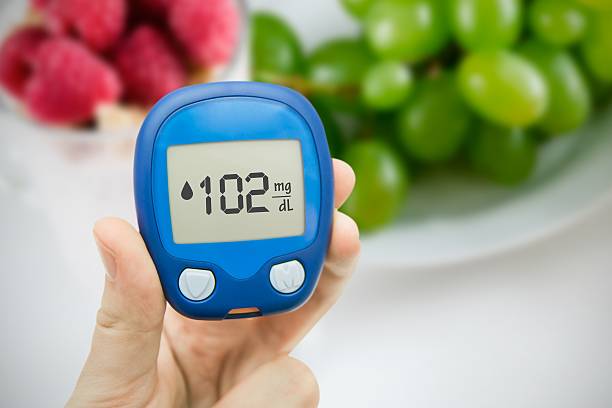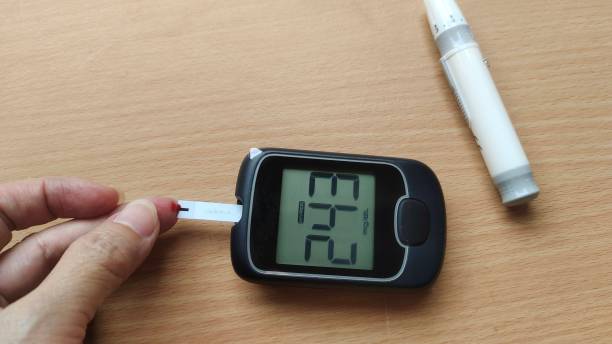Maintaining healthy blood sugar levels is key to feeling your best and protecting your long-term health. High blood sugar can leave you feeling tired, thirsty, or even irritable, while steady levels help keep your energy and mood balanced. If you’re looking for simple, natural ways to lower your blood sugar quickly—with solid science behind each tip—you’re in the right place.
I’ll walk you through easy steps you can take, explain why they work, and show you how to weave them into your daily routine. From small food swaps to simple lifestyle changes, you’ll discover practical strategies that make a real difference so you can feel more in control of your health.
Why Lowering Blood Sugar Naturally Matters
Keeping your blood sugar in a healthy range helps you:
- Stay full of energy — Balanced levels mean your body can use glucose efficiently, giving you steady fuel throughout the day and helping you avoid those dreaded afternoon slumps.
- Support heart health — High blood sugar can put extra stress on your heart and blood vessels, increasing the risk of heart disease over time. Keeping levels stable protects your cardiovascular system.
- Prevent mood swings — When blood sugar spikes and crashes, your mood can go along for the ride. Steady blood sugar supports a more balanced, calm state of mind.
- Protect long-term health — Managing your blood sugar now can help reduce your risk of type 2 diabetes and other related health issues later in life, keeping you healthier for years to come.
Know Your Blood Sugar Numbers
Understanding where you stand is the first step.
Use a reliable finger-prick glucose meter or a continuous glucose monitor (CGM) to check your levels regularly. Test at different times—such as before meals, after meals, and before bed—to get a clear picture of how your body responds. Write down your readings and track them over several days or weeks.
Look for patterns, like spikes after certain foods or dips when you’re more active. This information shows you exactly what works for you and helps you make smarter choices to keep your blood sugar in a healthy range.

Quick Natural Ways to Lower Blood Sugar Fast
Here are simple, research-backed actions you can take—fast.
1. Move Right Now: Walk or Stretch
Just 10 minutes of brisk walking or light stretching helps your muscles use glucose, lowering levels quickly.
2. Snack Smart: Choose Low-GI, High-Fiber Foods
Pick foods that release sugar slowly. Think:
- Whole nuts like almonds or walnuts
- Veggies like carrots or cucumber
- Apple slices with a bit of peanut butter
These slow digestion and steady your blood sugar.
3. Drink Water Wisely
Staying hydrated helps flush out extra glucose. Plain water is your best pick—skip sugary drinks and fruit juice.
4. Breathe Deeply, Stress Less
Stress raises blood sugar. Take 3–5 deep, easy breaths. You’ll calm your body and ease that sugar spike.
5. Add Apple Cider Vinegar
1–2 tsp mixed in water before a meal may slow digestion and blunt your blood sugar rise. A study in Diabetes Care shows promise for this simple trick.

Daily Habits That Help Lower Blood Sugar Naturally
For long-term control, weave these habits into each day:
Eat Smart with Fiber & Protein
Fiber-rich foods—like oats, beans, and vegetables—play a key role in keeping blood sugar steady. Fiber slows the breakdown of carbs, preventing sudden spikes and crashes. Pairing these foods with protein sources such as eggs, Greek yogurt, chicken, or fish adds an extra benefit—protein takes longer to digest, which further slows sugar absorption into the bloodstream. This combination not only supports healthy glucose levels but also keeps you fuller for longer, helping you avoid unnecessary snacking and cravings.
Embrace Regular Physical Activity
Try to keep moving throughout the day: take short 5-minute walking breaks every hour to boost circulation and help your muscles use glucose. Stand up often—whether you’re at work, watching TV, or on your phone—to avoid long periods of sitting that can raise blood sugar. When possible, choose the stairs instead of the elevator for a quick burst of activity. These small, consistent moves add up over time, improving your energy, supporting a healthy weight, and keeping your blood sugar in check.
Level Up Sleep
Getting 7–9 hours of restful sleep each night helps balance your hunger hormones, such as leptin and ghrelin, which play a role in appetite and cravings. Good sleep also supports steady blood sugar by reducing stress hormones that can trigger spikes. To improve your sleep quality, consider using sleep tech like white noise machines, smart sleep trackers, or blue light–blocking glasses. A calming bedtime routine—such as reading, stretching, or sipping herbal tea—can also help your body relax and prepare for deep, restorative rest.
Mindful Eating
Eat without distractions like TV, phones, or laptops so you can pay attention to your meal. Chew slowly, taking time to enjoy each bite, and focus on the flavors, textures, and aromas of your food. This mindful approach gives your body time to signal when it’s full, which helps prevent overeating. Eating at a slower pace also allows your digestive system to process food more steadily, reducing the chance of sharp glucose spikes after meals and supporting better blood sugar control.
Choose Smarter Carbs
Swap white rice for brown rice, quinoa, or other whole grains to boost fiber and nutrients. Choose whole grain bread instead of white bread to avoid quick sugar spikes. These complex carbs are digested more slowly, which helps keep blood sugar steadier throughout the day. They also provide longer-lasting energy, keep you full for longer, and support better overall digestion. Making these small switches in your meals can have a big impact on long-term blood sugar control.
Spice it Up
Cinnamon and fenugreek may help—studies suggest they can modestly lower blood sugar levels by improving how your body uses insulin. Cinnamon is easy to add to your diet—sprinkle it on oatmeal, stir it into tea or coffee, or mix it into yogurt for a warm, sweet flavor without added sugar. Fenugreek seeds can be soaked overnight and eaten in the morning, or simmered with soups, curries, and other dishes to add a mild, nutty taste. Including these natural spices in your meals may offer gentle, long-term support for healthy blood sugar management.
What the Science Says
Let’s back these tips with sources you can trust:
- Apple cider vinegar has more than just a folk remedy reputation. Research in Diabetes Care found that taking it before or during meals can help lower both insulin and blood sugar afterward. This makes it a simple, natural add-on to your daily routine.
- Physical activity—such as a short 10–15 minute walk after eating—can work wonders for your blood sugar. Studies show it helps your muscles absorb glucose faster, reducing post-meal spikes and supporting long-term metabolic health.
- Fiber intake is another proven tool. Getting it from whole grains, beans, lentils, and vegetables not only keeps you full but also slows the absorption of sugar into your bloodstream. Dietary reviews confirm that high-fiber diets improve insulin sensitivity and overall glycemic control.

Quick Reference: Fast + Natural Fixes
| Action | Why It Works |
|---|---|
| Walk or stretch | Muscles use glucose, lowering levels fast |
| Eat low-GI, high-fiber snack | Slows sugar release into your blood |
| Drink plain water | Flushes excess sugar naturally |
| Deep breathing | Calms stress, which can spike sugar |
| Apple cider vinegar | Slows digestion and reduces glucose rise |
Friendly Tips to Make It Happen
- Put “post-meal walk” on your schedule—even 10 minutes counts.
- Keep easy snacks on hand. Try carrot sticks or a small handful of nuts.
- Flavor water with mint or cucumber slices to make it more appealing.
- Set an alarm for mindful breathing breaks.
- Add cinnamon to your coffee or oatmeal in the morning.
Strong Call to Action
You’ve got the tools—now put them into action! Start today with one of these:
- Try a short walk after your next meal.
- Swap one sugary drink for a glass of water.
- Add fiber-rich food to your plate.
Then check your blood sugar to see what shifts. Track small wins—every little step adds up to a big change. Share your progress below! Did walking help after dinner? Did water make a difference?
Friendly Conclusion & Reader Engagement
Lowering your blood sugar quickly and naturally doesn’t require drastic changes—it only takes consistent, easy steps you can do every day. Simple actions like taking a brisk walk after meals help your muscles use up excess glucose. Choosing snacks rich in fiber, such as nuts, seeds, or fresh vegetables, slows sugar absorption and keeps levels steady. Drinking enough water supports your kidneys in flushing out extra glucose.
Managing stress through deep breathing, stretching, or meditation can also help keep blood sugar in a healthy range, as stress hormones can cause spikes. These small daily habits work together to gently guide your body toward balance.
What’s one simple habit you’ll try today? Share your plan or ask questions—let’s cheer each other on. After all, small steps become big wins when we do them together.

